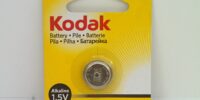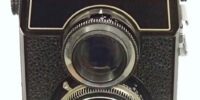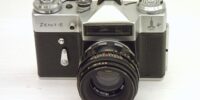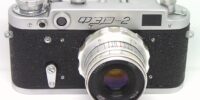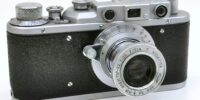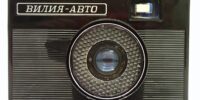Pre-WWII Lens FED-36 6,3/100 & viewfinder FED 100 mm
 We continue to study the pre-war products of the Kharkov Plant named after Dzerzhinsky, produced under the FED brand, and move on to the most interesting thing – to optics.
We continue to study the pre-war products of the Kharkov Plant named after Dzerzhinsky, produced under the FED brand, and move on to the most interesting thing – to optics.
Surprisingly, before the beginning of the Great Patriotic War, Kharkiv residents provided their photo-system with a full-fledged fleet of optics. The range of lenses could not be called large, but it included exactly everything you need. There was even a dedicated macro lens.
Well, think about it, we are talking about the end of the 30s. And we are discussing the optics park! Fantastic!
 In this photo, not all accessories of the FED brand are shown, but almost everything that is directly related to lenses. There are not enough light filters and attachment lenses.
In this photo, not all accessories of the FED brand are shown, but almost everything that is directly related to lenses. There are not enough light filters and attachment lenses.
The photo is not mine, it is from the resource marcocavina.com. There are a couple of things here that I’m unlikely to have. Very rare and expensive …
Today we will look at the FED-36 long-focus lens from this set.
FED-36 6,3/100
 There is very little information about FED accessories. All archives were lost under bombs in the first months of the War or during the evacuation of the plant. Nobody really knows either the years of production or the volume of output.
There is very little information about FED accessories. All archives were lost under bombs in the first months of the War or during the evacuation of the plant. Nobody really knows either the years of production or the volume of output.
Those copies of the FED-36 that I saw are marked as products of the Dzerzhinskiy Kharkiv NKVD Combine. This is the name of the company, as far as I know, was in the interval December 1938 — January 1941. Perhaps, the production of FED-36 is limited to this period.
In terms of output volumes, everything is generally sad from the point of view of information. If anyone has the information, please share it.
I can say that this lens is now rare, of course, but not unique. The offer comes up regularly. Considering how many lenses were lost during the Second World War and in subsequent years, I can assume that they were released, after all, relatively a lot.
The review shows an example in excellent condition with the reference number 31099.
Optical design:
Focal length: 100mm
Field of view: 24 °
Frame size: 24 × 36 mm
Number of lenses / groups: 4/2
Working distance – ~ 28.8 mm
Aperture ratio: 1: 6.3
Aperture scale limits: 1: 6.3–1: 36
Aperture blades – 10
Aperture adjustment – stepless
Aperture preset – none
Close focus limit – 1 m
Connections:
lens with camera – M39 × 1
for slip-on attachments – ∅ ~ 37 mm
Filter Mount Location: Front
Resolution according to TU (center / edge): 21 / 12.5 lines / mm
Weight — 228 g
FED-36 is a fully functional telephoto lens with a focal length of 100 mm. At the same time, FED-36 is a very compact lens for such a focal length. Among the Soviet – probably the most compact.
Its length when focusing to infinity is about 5.5 cm.
A few more comments on the performance characteristics indicated above.
FED cameras of those times, although they were produced for a focal length of 28.8 mm, but the level of tolerances in production was still great, and interchangeable lenses had to be adjusted for a specific device. It is only possible to speak about the focal length of a particular specimen approximately.
F6.3 means a very dark lens by today’s standards. There is a very rare version of the 100 mm lens – FED 5.9 / 100.
It is unrealistic to meet such a thing now and it is incredibly expensive, since the production volumes were very small, possibly piece-by-piece. Here is a photo from the site photohistory.ru


There is information that the release of 5.9 / 100 was preceded by the release of 6.3 / 100 and was curtailed due to difficulties in production and claims to the quality of the picture. The gain in aperture less than 1 stop made the 5.9 / 100 version unavailable.
At the same time, focusing accuracy using a rangefinder at a focal length of 100 mm leaves much to be desired. Therefore, there was no sense in a larger aperture ratio. All the same, the diaphragm would have to be pressed to provide depth of field with a margin.
The aperture limit of this specimen is f36. There are options with a limit of f12, 5.
I was very surprised to find on several resources on the Web with descriptions of the lens dashes in place of the diameter of the attachments.
The Kharkov plant provided its optics with such accessories as light filters and attachment lenses for reproductions.
All FED lenses that I have have the same front end diameter and therefore the same filter fits all lenses at once.
As I said, I could not find the exact diameter, a simple ruler showed something about 36-37 mm.


Filters are non-threaded and simply slide onto the front of the lens. Filter rims provide a tight, spring-loaded fit.
In the book “Camera FED” D. Bunimovich writes that the Combine directly produced 4 filters and all of them were yellow of different density.
In the USSR, filters for the FED photosystem were also produced by the Moscow Laboratory of Mosgorprom under the SKS brand. There were nine SCS filters, and among them, in addition to yellow, were green, red and orange.
There is, however, information that the Kharkov plant also produced filters of different colors.
A special glamor on the part of the Combine was the application of the company’s logo directly to the filter glass in the peripheral area.
Why color filters are needed for black and white photo printing, you can learn from special article.
What else to say about FED-36?
The lens is assembled perfectly. The case is light, as far as it was possible to find out, it is chrome-plated brass. The rangefinder ring is brass without coating. The lens is heavy for its size.
The numbers and risks of the scales are plotted as grooves in the surface of the case.


The scales are marked in such a way that they must be read while holding the lens sideways.
 There is a large platform at the rear of the lens, on which there are two driver pins. Apparently, they are needed to facilitate the process of winding / unscrewing, if it suddenly requires effort.
There is a large platform at the rear of the lens, on which there are two driver pins. Apparently, they are needed to facilitate the process of winding / unscrewing, if it suddenly requires effort.
When attaching the lens to different cameras, it is not guaranteed that the depth-of-field scale and distance mark will be oriented upward each time.
The focusing ring is the first from the apparatus. It is equipped with a comfortable double knurling and has a very long stroke – under 340-350 degrees.
When focusing 1 meter, the lens extends 1.2 cm.
The ring farthest from the apparatus is responsible for the diaphragm. The entire front part of the lens rotates during focusing and therefore the aperture scale turns out to be on one side, then on the other.
FED-36 optics have no coating.
 There are 10 aperture blades. The petals are dark, but shiny. Have a bluish scale.
There are 10 aperture blades. The petals are dark, but shiny. Have a bluish scale.
 Front and rear lens caps are aluminum.
Front and rear lens caps are aluminum.


FED-36 is stored in a classic cylindrical case made of hard leather with an embossed FED emblem.
Viewfinder FED 100 mm
 Interchangeable optics for rangefinders requires interchangeable viewfinders. No other way.
Interchangeable optics for rangefinders requires interchangeable viewfinders. No other way.
The FED plant completed its long-focus lens with a corresponding viewfinder of its own production.
The viewfinder is small, weighing only 26 grams. The biggest surprise is the parallax compensation option in the viewfinder. Many more modern Soviet viewfinder models did not have this option.


The rear end of the viewfinder is equipped with a rotary ring and a distance scale.


The ring is made as an eccentric and when it rotates, the angle of inclination of the optical axis of the viewfinder changes.
The plant did not forget about the emblem either. The height of the letters is slightly more than 1 mm.


The viewfinder gives the picture a small, but completely bright one. As for the viewfinder of the device itself, the picture quality is normal.
The viewfinder is stored in a special small leather case.


Of course, I needed to test the lens in action.
Unfortunately, I don’t have a mirrorless camera and I went with a film camera.
At close range, I used a laser rangefinder and a distance scale, at long range, I twisted it to infinity.





I suppose I did blur with focus, because the lenses of those years were supposed to be adjusted and you can’t just rely on the scale. And even more so on the rangefinder…. Plus printing, plus scanning. In general, so-so.
However, you can get an idea, for example, about the nature of the blurring of the background. Despite the low aperture, you can still blur the background.
But it was necessary to evaluate the picture more accurately, so I took a few more macro shots with a digital SLR.



Here, although the low resolution is noticeable, everything looks more optimistic. These shots are taken at f9.
I’ll also draw your attention to strong vignetting.
Of course, it is impossible to call the picture that the FED-36 gives good. But I will put it this way.
The image quality of the lens is many times greater than the capabilities of all other components of the photo process, such as the focusing accuracy available then, the resolution of photographic film, the quality of the development of those years, the printing of images, etc.
Just look at the pre-war and WWII photos. Designing a lens with better performance would be pointless, even if possible.
Now FED-36 is a deservedly desired element of any photo collection. The classic look of the FED apparatus with such a lens is completely transformed.
If you find inaccuracies in the article or you have more information, please report / share.


I do not have a lens passport and therefore I again resort to the help of photohistory.ru


That’s all for me, good luck!
This is a link to the site’s Patreon channel. Join and support the project!










